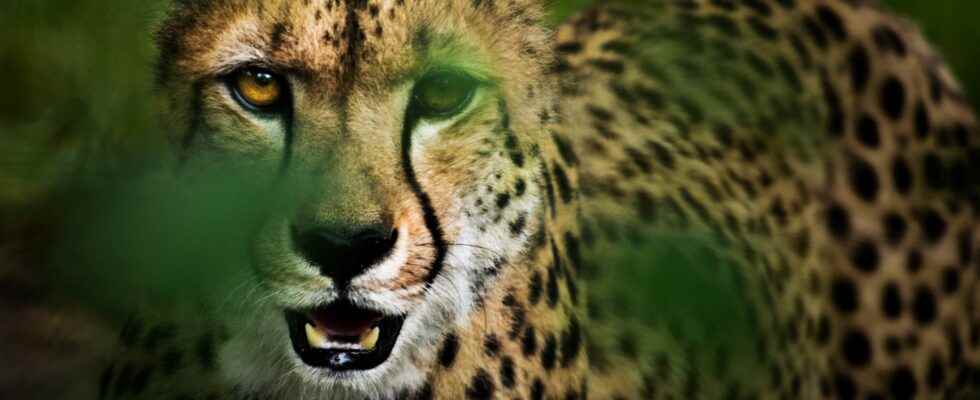Actually, Kuno National Park was intended for another predator, the Asiatic lion. At the end of the 1990s, the former reserve became a national park and more than 5,000 people had to evacuate their villages. As compensation, they received a piece of land outside the protected area. But the lions never came – which is why it was decided to settle the cheetahs in Kuno. Before arrival, the last remaining village should also clear the national park.
© Sproetniek / Getty Images / iStock (detail)
Young cheetah hunting in the Kalahari | There are still around 6500 adult specimens left across Africa.
“In the name of protecting species, the poorest of the poor are being asked to leave their homes,” says Asmita Kabra of Delhi’s Ambedkar University. The economist has researched how the resettlement affects the people affected. »When they had to leave the reserve, they lost their livelihood, their new land was not enough for cultivation. Indigenous communities were sent out of their forest and turned into cheap labour.” The former farmers left most of their animals behind because there was no water or food for them at the place where they moved. They should now serve as prey for the cheetahs.
The conflict between humans and animals is ancient. Wachter observed him again and again in Namibia. Because cheetahs killed their calves, farmers shot the big cats. The researchers from Leibniz-IZW worked together with the cattle farmers, collected data together with them, and developed strategies for peaceful coexistence. All of this is only possible in close coordination and with scientific support, says Wachter. The fact that the Indian government is clearing entire villages in advance is causing criticism. “Our belief systems include many elements associated with animals, plants, and nature in general,” says wildlife biologist Ravi Chellam, who has studied Asiatic lions for decades. However, politicians ignore this special relationship.
The desire for more tourism against reason
In the long term, people should come back to the park: wealthy safari guests. Because the arrival of the cheetahs is playing a new trump card for the tourism industry. If the settlement succeeds, India can advertise with four big cats in the wild: cheetahs, lions, tigers and leopards.
However, the other predators could endanger the new arrivals from Africa. Although the cheetah is the fastest mammal in the world, it is mercilessly inferior to its competitors because of its physique. Wachter and her colleagues recently noticed this in Namibia. In her study area, the cheetah population is shrinking slightly – because more and more leopards are coming. “As soon as there are competitors, the pressure on the cheetahs increases and their numbers decrease,” says Wachter.
The leopard density in Kuno is high, as the action plan points out. However, the authors believe that coexistence is possible as long as there is sufficient prey. The zoologist Marker is also confident: “The animals from Namibia and South Africa are used to other predators.” After the resettlement, teams from Namibia and India will track and observe the cheetahs with the help of radio collars. Watchtowers were erected and cameras installed. But, says Marker, you can never completely protect animals in the wild.
